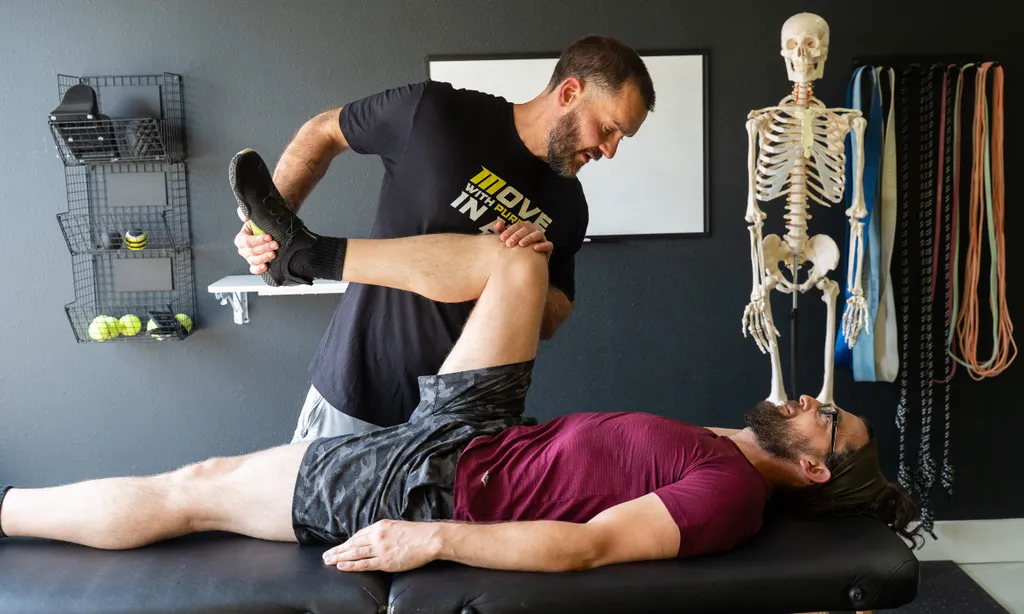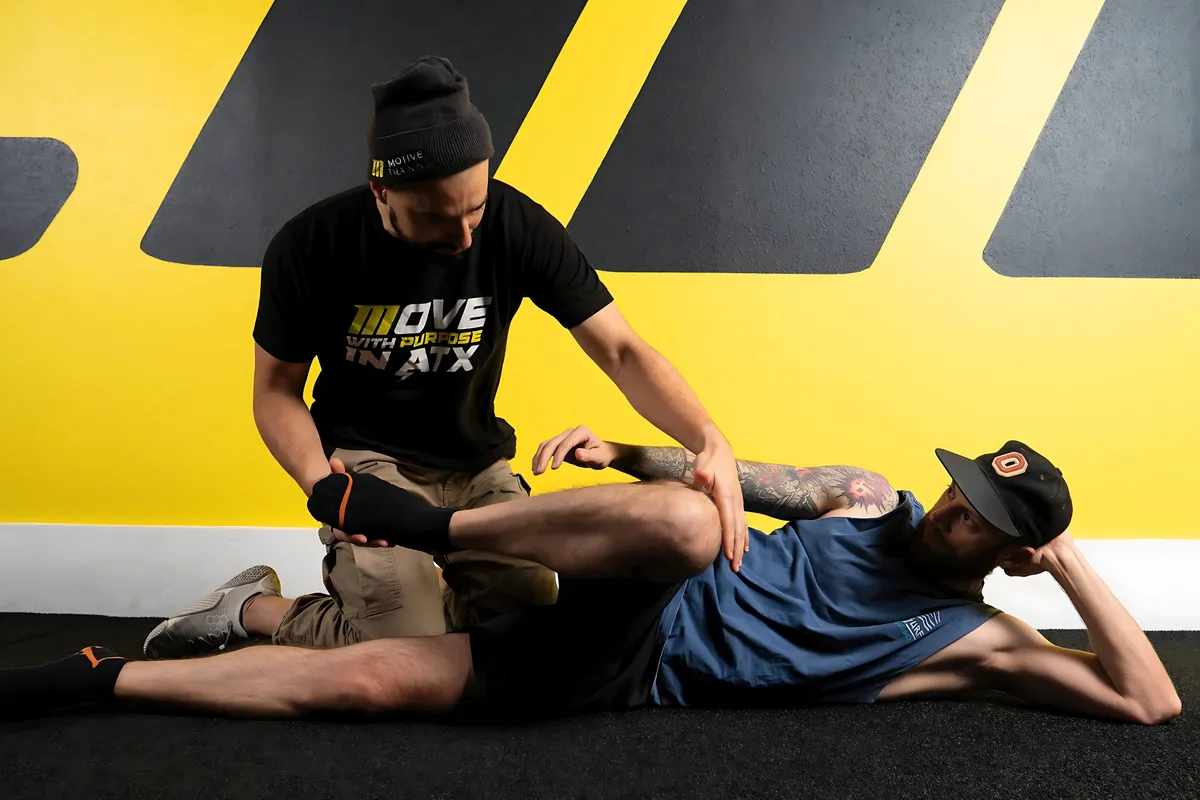Functional Range Assessment: The Most Direct Path To Better Movement In Austin
November 5, 2025 | Functional Range Assessment

If you’ve trained with us, you know we don’t guess. We assess. The Functional Range Assessment (FRA) is a joint-by-joint system that we use to map how your body actually moves, allowing us to design training that fits you—not a template. FRA is part of the Functional Anatomy Seminars family (the same system behind FRC and KINSTRETCH), and it’s built to quantify your baseline movement capacity, making programming decisions more obvious.
Quick win for the community: Stone, Robin, and Brian C. all earned their FRA certifications this past weekend. That means more appointment availability for assessments in South Austin and an even stronger bench of coaches who can translate your results into progress.
What Is The FRA?
FRA is a measurement-driven assessment that looks at each major joint individually—spine, shoulders, hips, knees, ankles, and toes—to determine two things:
- How much motion you have (passive range).
- How much motion you can control (active range).
The difference between those two numbers tells us exactly where you need input: mobility development, end-range strength, or motor control. FRA was designed to remove confirmation bias in assessments, standardize procedures, and help coaches prioritize what matters most for your program.
If you want to go straight to the source, the FRA is situated within the larger Functional Range Systems framework, alongside FRC (joint training for mobility, articular strength, and neural control) and KINSTRETCH (group mobility training).
Why FRA Beats Generic “Movement Screens”
1) It’s Joint-Specific and Quantifiable
Generic screens often blend multiple joints into one task. FRA isolates each joint so you don’t hide a weak link behind a strong one. Because it’s standardized and number-based, retesting shows clear progress—or tells us to adjust the plan.
2) It Points Directly To The Right Training Inputs
Your FRA results tell us where to start: daily joint care with Controlled Articular Rotations (CARs), end-range isometric strength like PAILs/RAILs, or more advanced Functional Range Conditioning strategies. These methods are designed to exist within the same system, so assessment flows seamlessly into intervention without guesswork.
3) It Reduces Injury Risk While Improving Performance
When you expand usable ranges and strengthen the tissues that control those ranges, movement becomes more efficient and resilient. FRA helps us target those ranges precisely.
What An FRA Looks Like At Motive Training (South Austin)
Step 1: Conversation & Goals (5–10 min).
We begin with a discussion about what matters most to you—pain relief, performance, or simply moving more comfortably in daily life. This helps us anchor the assessment to outcomes that actually matter.
Step 2: Full-Body CARs Analysis (45 min).
We move through each of your joints using Controlled Articular Rotations. This process provides us with a clear picture of how your body moves, identifies areas where limitations exist, and highlights those that require attention. It’s the foundation for understanding your movement capacity before we begin testing.
Step 3: Table Tests (60 min).
Here, we measure your joints in a more detailed, standardized way. Each joint is tested for both passive and active range of motion, allowing us to assess how much you can move and how much control you have. The difference between those two numbers—the active–passive gap—tells us where to focus your training for the biggest results.
Step 4: Priorities & Plan (10–15 min).
Once we’ve gathered your data, we outline your next steps. You’ll leave with specific priorities: daily CARs for joint maintenance, targeted end-range strength work like PAILs/RAILs, and a personalized training block that fits your goals and your body.
When you’re ready to get started, book a Functional Range Assessment and we’ll build a plan that’s entirely your own.
Who Benefits Most From FRA?
- Pain & Injury Conquerors. FRA pinpoints mechanical limitations, allowing us to load the right tissues and restore joint function, rather than just masking symptoms.
- Athletes & Active Humans. Stubborn bottlenecks in hip rotation, shoulder elevation, or spinal control limit power and consistency. FRA reveals them and gives us a path to fix them.
- Lifestyle & Longevity Focused. Better joint health scales everything—strength, cardio, confidence. FRA provides a starting map and a way to track progress in a simple, motivating way.
FRA vs. FRC vs. KINSTRETCH (How They Fit Together)
- FRA = the measurement system that guides decisions.
- FRC = the joint training system we implement from those decisions (mobility development, articular strength, neural control).
- KINSTRETCH = the classroom environment where you practice those drills with coaching and community.
Want ongoing coaching tied to your assessment? Explore mobility coaching in Austin.
FAQ (Skimmable)
Is FRA a diagnosis?
No. FRA is a performance and movement capacity assessment. It quantifies motion and control to guide training; it does not diagnose medical conditions.
How long does an FRA take?
Plan on 2 hours, depending on your history, goals, and fitness experience.
Do I need to be flexible first?
No. FRA meets you where you are. The numbers help us select the safest and most effective starting point.
Is FRA just for athletes?
Not at all. Our client base includes people in pain, recreational athletes, and folks training for longevity. FRA simply tells us what to train next.
Local Note For South Austin
We serve clients in the St. Elmo and greater South Austin areas. If you’re nearby and want a data-driven path forward, book your Functional Range Assessment and ask about functional mobility assessments in Austin.
Why We’re Doubling Down On FRA Right Now
We’re leaning into the Functional Range Assessment because it gives us the clearest picture of how to help you move better. Over the next few months, you’ll see more FRA-guided success stories, educational pieces on Controlled Articular Rotations, and deep dives into PAILs and RAILs so you can understand what we’re doing and why it works.
At Motive Training, our goal is to keep making mobility training practical and personal—and FRA is at the center of that.
Ready To Start?
Your next best session starts with a map. Book your Functional Range Assessment, and we’ll create a personalized plan to help you move better, feel pain-free, and perform at your best.
Written by
Brian Murray, FRA, FRSC
Founder of Motive Training
We’ll teach you how to move with purpose so you can lead a healthy, strong, and pain-free life. Our headquarters are in Austin, TX, but you can work with us online by signing up for KINSTRETCH Online or digging deep into one of our Motive Mobility Blueprints.

